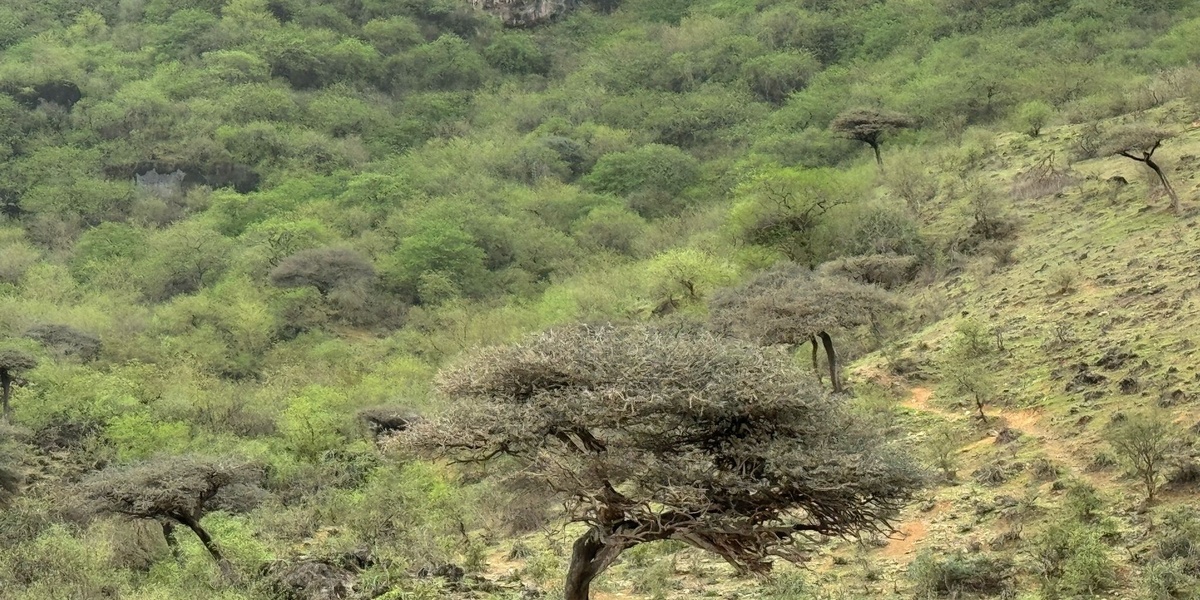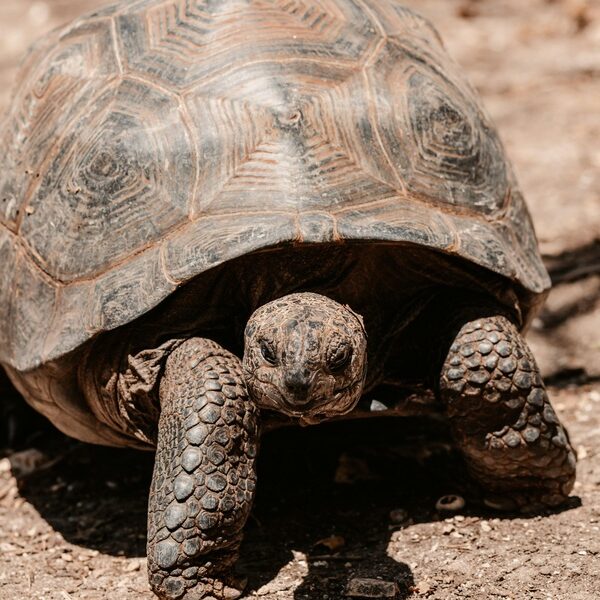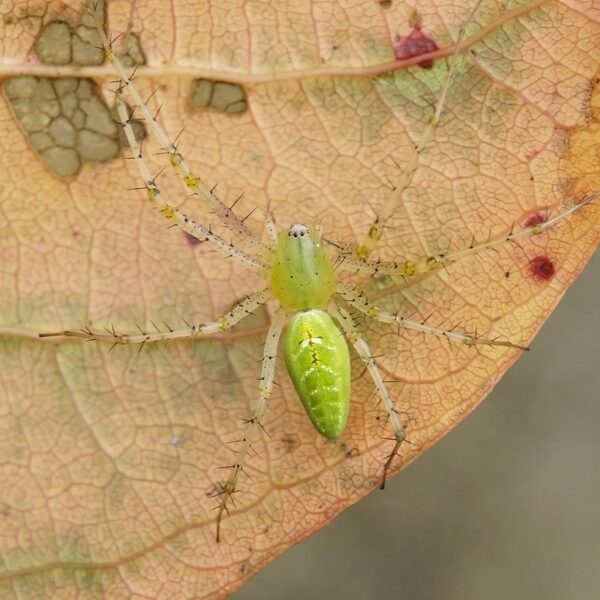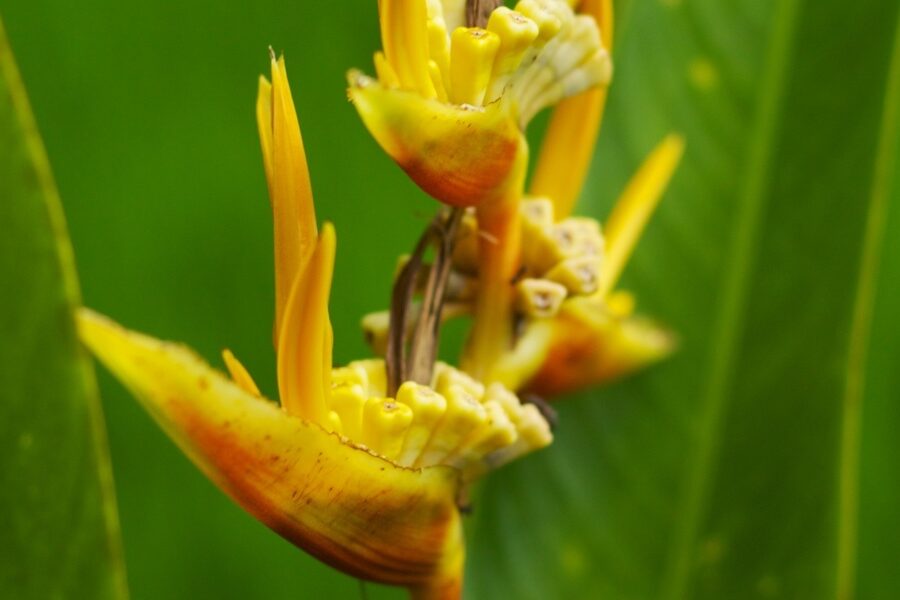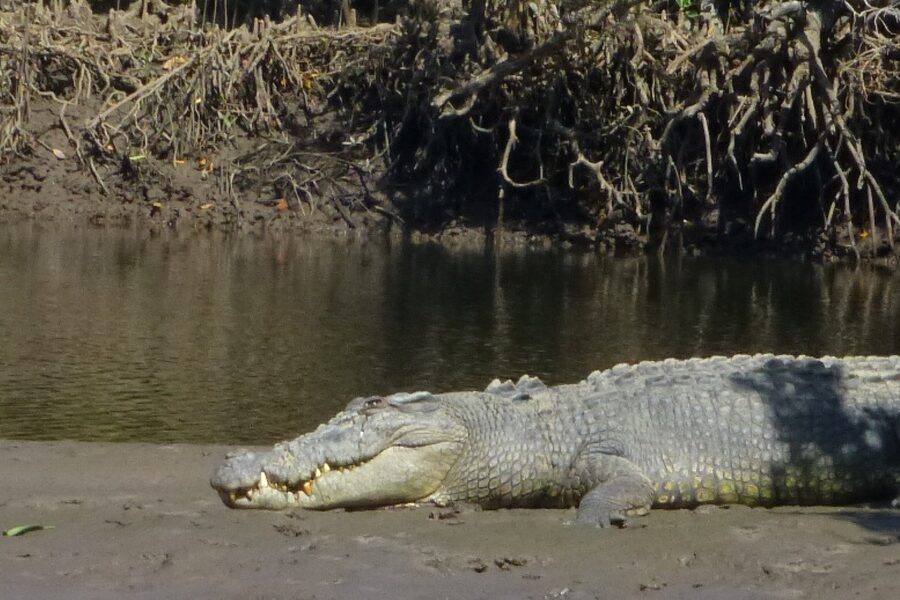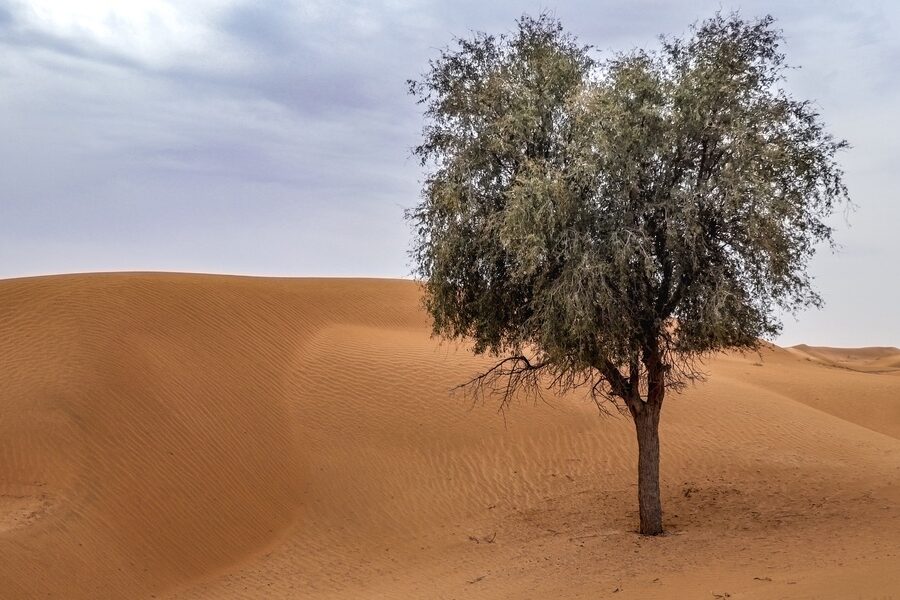Eritrea’s varied landscapes — from Red Sea shorelines and arid lowlands to cooler highland plateaus — support a diverse mix of local flora tied to traditional uses and unique habitats. This list brings together species native to the country so you can see what grows across its different regions.
There are 50 Eritrea’s native plants, ranging from Abyssinian Banana to Yellowwood; for each entry you’ll find the Scientific name, Habitat, Range in Eritrea to make comparisons and field use easier — you’ll find below.
How current is this list and where does the information come from?
The entries are compiled from regional floras, herbarium records, and published field guides, supplemented by recent surveys and local expert input where available; however, plant distributions can shift, so consult local herbaria or recent studies for the latest range updates.
Can I use this list to identify plants in the field?
Yes as a starting reference: the Scientific name, Habitat, and Range in Eritrea columns help narrow possibilities, but for accurate ID you should pair this list with photographs, a regional field guide, or a botanist’s confirmation for similar-looking species.
Eritrea’s Native Plants
| Name | Scientific name | Habitat | Range in Eritrea |
|---|---|---|---|
| Ombet Dragon Tree | Dracaena ombet | Dry, rocky slopes and cliffs of the eastern escarpment and coastal mountains. | Eastern escarpment, Semienawi Bahri National Park, and adjacent mountainous areas. |
| African Pencil Cedar | Juniperus procera | Montane forests and woodlands, often on rocky slopes in the highlands. | Central highlands, particularly around the Filfil Solomona area and the eastern escarpment. |
| African Wild Olive | Olea europaea subsp. cuspidata | Dry evergreen upland forests, scrublands, and rocky hillsides across a wide elevation. | Widespread in the central highlands and escarpment regions like Debub and Maekel. |
| Frankincense Tree | Boswellia papyrifera | Dry, rocky hillsides and woodlands in the western and northern lowlands. | Gash-Barka and Anseba regions, forming significant portions of the dry woodlands. |
| Doum Palm | Hyphaene thebaica | Riverbanks, oases, and areas with high groundwater in arid and semi-arid lowlands. | Common along seasonal riverbeds in Gash-Barka, Anseba, and Northern Red Sea regions. |
| Eritrean Aloe | Aloe camperi | Rocky outcrops, hillsides, and well-drained soils in the highlands and escarpment. | Endemic to the highlands of Eritrea and neighboring parts of Ethiopia. |
| Desert Date | Balanites aegyptiaca | Arid and semi-arid savanna, woodland, and scrubland, tolerant of various soils. | Widespread in the lowlands, particularly Gash-Barka and parts of Anseba region. |
| Giant Candelabra Euphorbia | Euphorbia abyssinica | Rocky slopes, hillsides, and dry woodlands in the highlands and escarpment. | Common on slopes of the central highlands and eastern escarpment. |
| Kosso Tree | Hagenia abyssinica | High-altitude Afromontane forests, often near the upper forest line. | Found in remnant forest patches in the highest elevations of the central highlands. |
| Grey Mangrove | Avicennia marina | Intertidal zones, mudflats, and estuaries along the coastline. | Forms extensive mangrove forests along the Red Sea coast, especially near Massawa and Assab. |
| Red Mangrove | Rhizophora mucronata | Seaward fringe of mangrove forests, in soft mud of tidal flats and creeks. | Along the Red Sea coast, often forming the frontline of the mangrove ecosystem. |
| Sycamore Fig | Ficus sycomorus | Riverbanks, groundwater forests, and savanna woodlands in low to mid-altitudes. | Widespread along watercourses in the lowlands and foothills of the escarpment. |
| Toothbrush Tree | Salvadora persica | Arid and semi-arid scrublands, desert fringes, and coastal plains, often on saline soils. | Common in the coastal plains and western lowlands. |
| Egyptian Thorn | Vachellia nilotica | Riverine woodlands and seasonally flooded plains in arid and semi-arid areas. | Found along the major river systems of the western lowlands, like the Gash River. |
| Myrrh Tree | Commiphora myrrha | Arid and semi-arid rocky scrubland on shallow soils. | Found in the dry, rocky lowlands and foothills of Eritrea. |
| Tamarind | Tamarindus indica | Savanna woodlands and riverine forests, preferring semi-arid conditions. | Naturally occurs in the western lowlands and foothills of Eritrea. |
| Abyssinian Rose | Rosa abyssinica | Highland forest margins, clearings, and montane scrubland, often climbing on other trees. | Found in the Afromontane vegetation of the central highlands. |
| Tree Heath | Erica arborea | High-altitude montane heathlands and upper forest margins, often in misty zones. | Occurs at the highest elevations of the Eritrean highlands, forming dense thickets. |
| Wild Dagga | Leonotis ocymifolia | Grasslands, savanna, and disturbed areas in mid to high altitudes. | Widespread in the highlands and escarpment areas as a native “weedy” species. |
| Cape Holly | Ilex mitis | Afromontane riverine and swamp forests in the highlands. | Found in wet areas and along streams within the highland forests. |
| African Cabbage Tree | Cussonia spicata | Montane forests, rocky outcrops, and wooded grasslands. | Occurs on the eastern escarpment and in the central highlands. |
| Red-hot Poker Tree | Erythrina abyssinica | Savanna woodlands, grasslands, and rocky hillsides at various altitudes. | Widespread in the mid-altitudes of the highlands and western lowlands. |
| White Raisin Bush | Grewia tenax | Arid and semi-arid scrublands and rocky slopes, highly drought-resistant. | Common throughout the dry lowlands and coastal plains of Eritrea. |
| Acacia etbaica | Vachellia etbaica | Dry woodlands and scrub on hillsides and plateaus, a dominant species. | Widespread in the highlands and escarpment, defining much of the landscape. |
| Bird Berry | Psychotria kirkii | Understory of moist Afromontane forests and riverine vegetation. | Found in remnant patches of moist forest on the eastern escarpment. |
| Simple-spined Carissa | Carissa spinarum | Forest margins, thickets, and savanna woodlands, from low to high altitudes. | Common throughout the country in various woodland and scrub habitats. |
| Sodom Apple | Calotropis procera | Disturbed land, roadsides, and overgrazed areas in arid and semi-arid zones. | Very common throughout the lowlands and coastal plains. |
| Abyssinian Banana | Ensete ventricosum | High-altitude forests, ravines, and areas with deep, moist soil. | Native to highland regions, though also widely cultivated as a food crop. |
| African Baobab | Adansonia digitata | Hot, dry savanna woodlands of the lowlands. | Found in the western lowlands, particularly in the Gash-Barka region. |
| Broom Bush | Cadaba farinosa | Arid and semi-arid bushland and scrub, often on sandy or rocky soils. | Widespread in the dry lowlands and coastal areas. |
| Christ’s Thorn Jujube | Ziziphus spina-christi | Arid and semi-arid savanna, riverbanks, and wadis. | Common in the lowlands and foothills throughout Eritrea. |
| Wild Date Palm | Phoenix reclinata | Riverbanks, swamps, and areas with high groundwater tables. | Occurs along watercourses in the highlands and lowlands where sufficient moisture is present. |
| Ader shrub | Cadia purpurea | Dry evergreen scrub and woodland on the slopes of the eastern escarpment. | Found on the eastern escarpment and in the central highlands. |
| Yellowwood | Afrocarpus falcatus | Afromontane forests in high rainfall areas. | Very rare in Eritrea, restricted to remnant patches of moist highland forest. |
| Somali Dragon Tree | Dracaena ellenbeckiana | Dry scrubland and rocky areas, often in limestone regions. | Found in drier areas of the country, distinct from the escarpment’s *D. ombet*. |
| African Birch | Anogeissus leiocarpa | Savanna woodlands, particularly along rivers and streams in the western lowlands. | A key species in the riverine woodlands of the Gash-Barka region. |
| Velvet-leaved Combretum | Combretum molle | Wooded grasslands and savanna, common across a wide range of altitudes. | Widespread in the western lowlands and mid-altitude woodlands. |
| Blue Sansevieria | Dracaena hanningtonii | Dry, rocky slopes and arid scrubland, often in dense colonies. | Found in the arid and semi-arid regions of Eritrea. |
| Shepherd’s Tree | Boscia senegalensis | Arid and semi-arid sahelian scrubland and sandy soils. | Common in the dry western lowlands and northern coastal plains. |
| Teff Grass | Eragrostis tef | Native to the Horn of Africa, wild populations exist in grasslands and disturbed areas. | Wild relatives are found in the highlands where it was first domesticated. |
| Koseret | Lippia abyssinica | Forest margins, montane scrub, and as a coffee shade plant in highlands. | Found in the central highlands, often associated with traditional farming systems. |
| Desert Rose | Adenium obesum | Hot, dry, rocky slopes and sandy plains in the lowlands. | Occurs in the arid lowlands and coastal regions. |
| Winter Senna | Senna singueana | Open woodland and savanna, often on termite mounds or rocky outcrops. | Widespread in the mid-altitude and lowland woodlands. |
| Bead-bean Tree | Maerua angolensis | Savanna woodlands and bushland, often on well-drained soils. | Common in the woodlands of the western lowlands and escarpment foothills. |
| Guarri Bush | Euclea schimperi | Dry evergreen forests, scrub, and rocky hillsides in the highlands. | A common component of the highland scrub and forest vegetation. |
| Cape Honeysuckle | Tecoma capensis | Riverine scrub, forest margins, and rocky outcrops. | Native range extends up the East African highlands into the region. |
| Gesho | Rhamnus prinoides | Highland forests, forest edges, and riverbanks. | Found in moist areas within the central highlands. |
| Arrow-poison Tree | Acokanthera schimperi | Dry evergreen forests and scrubland in mid to high altitudes. | Occurs in the dry forests of the highlands and escarpment. |
| Brown’s Terminalia | Terminalia brownii | Dry savanna woodlands and bushland, often on rocky soils. | A common tree in the western lowlands, particularly Gash-Barka. |
| Transvaal Gardenia | Gardenia volkensii | Wooded grasslands and rocky outcrops in semi-arid areas. | Found in the savanna ecosystems of the lowlands and mid-altitudes. |
Images and Descriptions
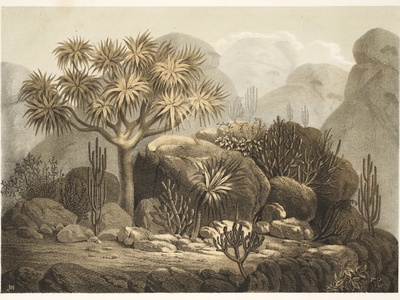
Ombet Dragon Tree
This iconic, umbrella-shaped tree is a true survivor, clinging to rocky cliffs. Its bizarre shape helps it capture moisture from mist, making it a key species of the mist oasis ecosystem.
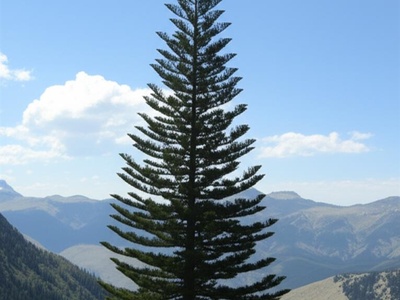
African Pencil Cedar
A tall, majestic conifer that forms the backbone of Eritrea’s highland forests. Its aromatic wood is highly valued, but over-exploitation has made remaining old-growth stands incredibly precious.
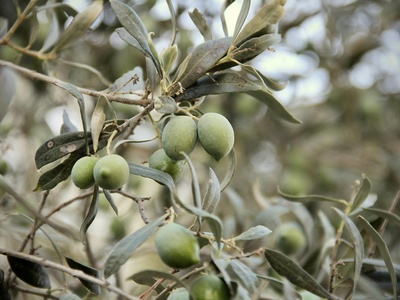
African Wild Olive
A hardy, slow-growing tree with silvery-green leaves, closely related to the cultivated olive. Its small, dark fruits are an important food source for birds and other wildlife.
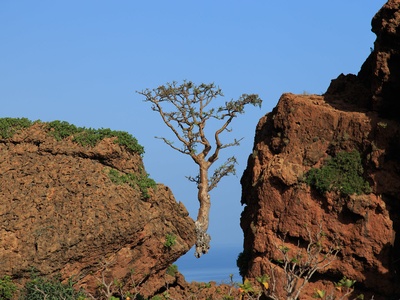
Frankincense Tree
The source of the famed frankincense resin. The bark is peeled back to allow the fragrant, milky-white sap to ooze out and harden, a practice dating back millennia.
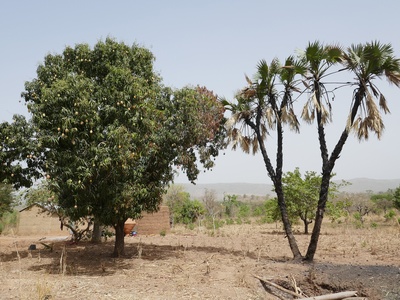
Doum Palm
A distinctive palm tree that often branches, creating a unique silhouette. Its hard-shelled fruit, known as “gingerbread,” has an edible, fibrous pulp and was even found in Egyptian tombs.
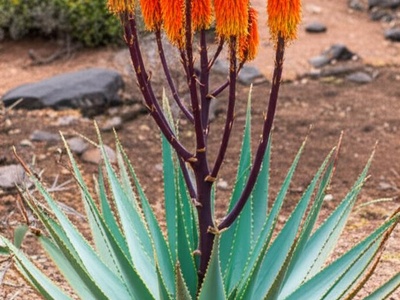
Eritrean Aloe
A striking succulent with rosettes of fleshy, spotted leaves and tall spikes of bright orange-red flowers. It’s a beautiful and tough plant, perfectly adapted to its rocky home.
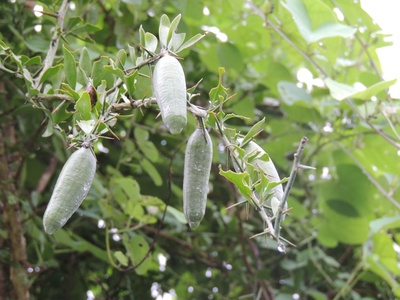
Desert Date
An extremely resilient spiny tree known for its edible, date-like fruit. The oil from its seed is used for cooking and medicinal purposes, making it vital for rural communities.
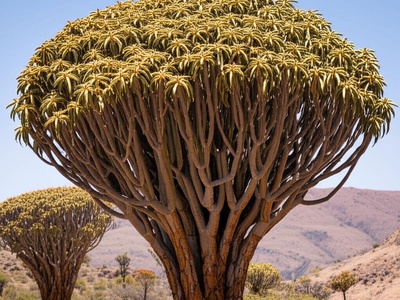
Giant Candelabra Euphorbia
This massive, tree-like succulent resembles a candelabra with its numerous branching arms. Its milky latex is toxic, a powerful defense against herbivores in its harsh environment.
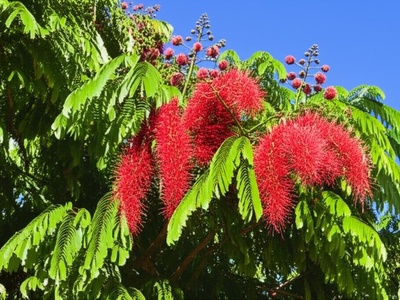
Kosso Tree
A beautiful tree with feathery, compound leaves and drooping panicles of reddish flowers. It has a long history in traditional medicine, particularly as a treatment for tapeworms.
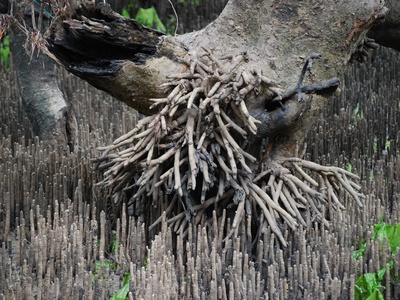
Grey Mangrove
A true coastal pioneer, this tree is adapted to salty environments with special roots that excrete salt. These mangrove forests are critical nurseries for fish and protect the coast.
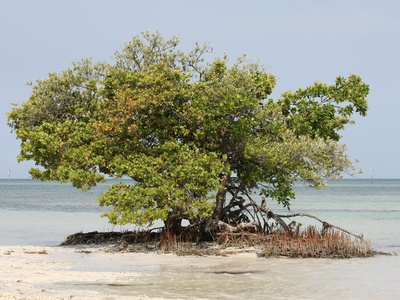
Red Mangrove
Easily identified by its tangled prop roots that arch down into the water. These roots provide stability in the mud and are vital habitats for many forms of marine life.
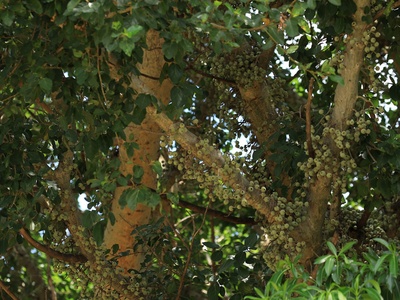
Sycamore Fig
A large, spreading fig tree considered sacred in many cultures. It provides deep shade and produces figs directly on its trunk and branches, a key food for many animals.
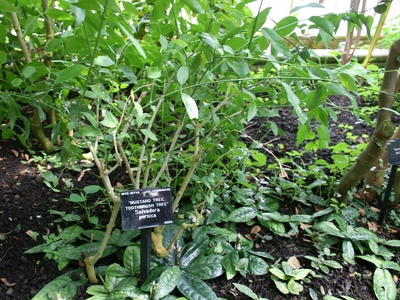
Toothbrush Tree
Known locally as the “miswak” tree, its twigs are famously used as a natural toothbrush. The plant is incredibly salt-tolerant and provides essential food for camels and goats.
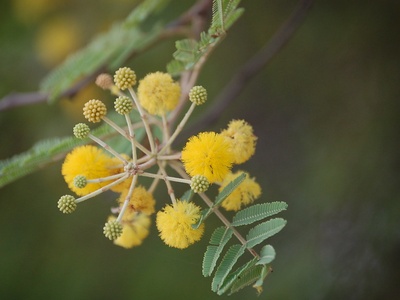
Egyptian Thorn
A classic acacia tree with feathery leaves, fragrant yellow flower balls, and distinctive long, grey seed pods. Its wood is durable, and it provides valuable fodder.
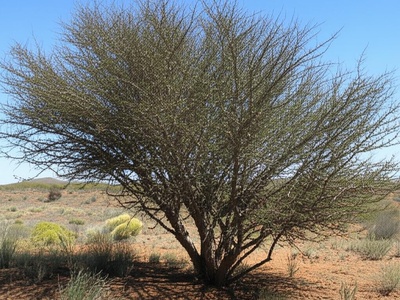
Myrrh Tree
This spiny, unassuming shrub is the source of myrrh, an aromatic resin with immense historical and cultural significance. The resin is harvested similarly to frankincense.
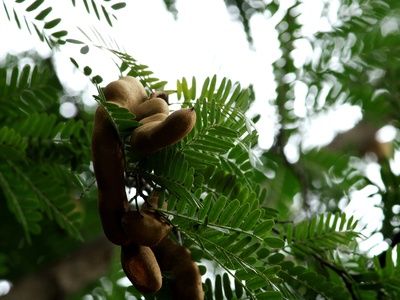
Tamarind
A massive, long-lived tree with a dense canopy. Its pods contain a sour-sweet pulp used globally in cuisines, drinks, and traditional medicine. It is native to tropical Africa.
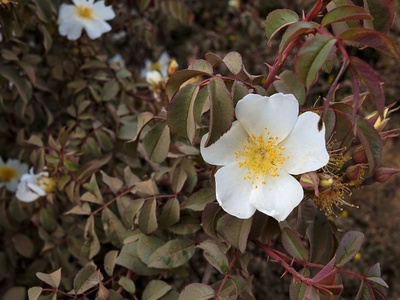
Abyssinian Rose
Africa’s only native rose, this species is a scrambling climber with fragrant, simple white flowers. It is a beautiful and unique component of the highland flora.
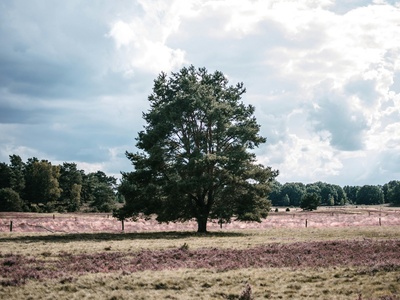
Tree Heath
This tall shrub or small tree can dominate the high-altitude landscape. Its fine, needle-like leaves and masses of tiny white, bell-shaped flowers create a unique habitat.
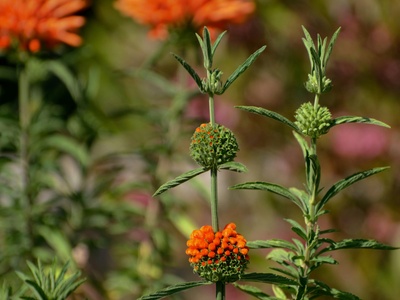
Wild Dagga
A striking plant with whorls of bright orange, fuzzy, tubular flowers arranged in tiers along the stem. It’s a favorite of sunbirds, which are attracted to its nectar.
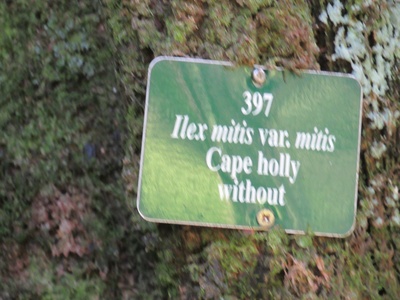
Cape Holly
A handsome evergreen tree with smooth, grey bark and glossy dark leaves. It is a key species of the wettest parts of the highland ecosystem, though now quite rare.
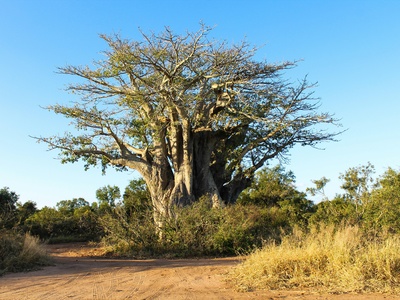
African Cabbage Tree
A distinctive tree with a thick trunk and a crown of large, palm-like leaves clustered at the ends of branches. Its unusual shape makes it a standout in the landscape.
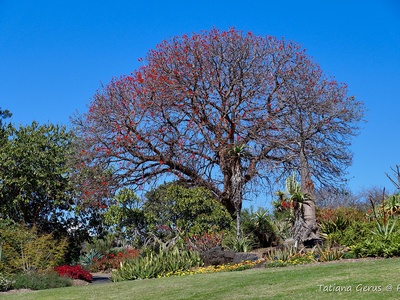
Red-hot Poker Tree
A spectacular deciduous tree that produces brilliant scarlet-red flowers on bare branches before the leaves emerge. Its corky bark provides protection from grass fires.
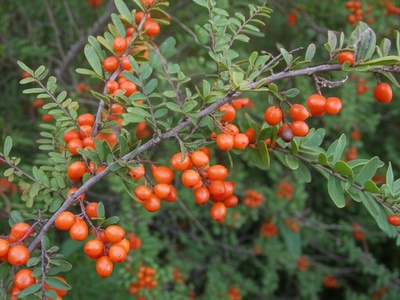
White Raisin Bush
A tough, multi-stemmed shrub known for its small, four-lobed, orange-red berries called “guddaim.” The berries are edible, with a sweet and sour taste, and are a local delicacy.
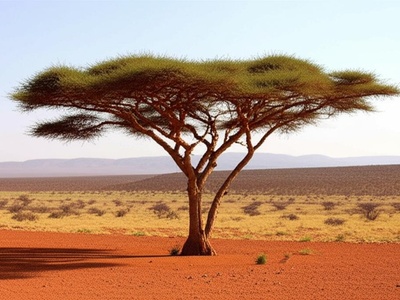
Acacia etbaica
A flat-topped acacia that is a key component of the Eritrean landscape. It is well-adapted to dry conditions and provides shade, fodder, and firewood for local communities.
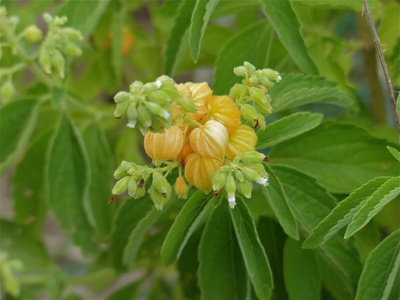
Bird Berry
A small shrub with glossy leaves and clusters of bright red berries that are very attractive to birds. Its presence indicates a healthy, moist forest understory.
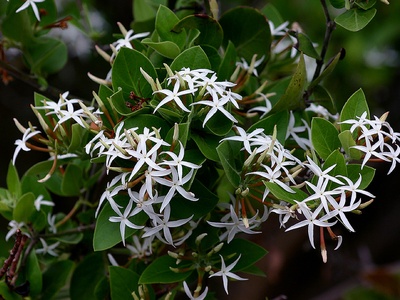
Simple-spined Carissa
A spiny, scrambling shrub that produces fragrant, star-shaped white or pinkish flowers. The small, dark purple fruits are edible and sweet when fully ripe.
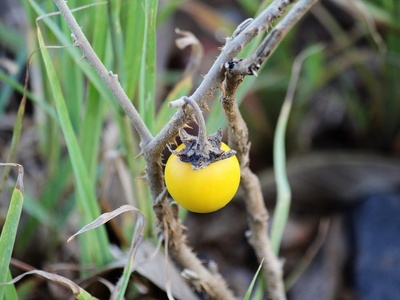
Sodom Apple
A hardy shrub with large, waxy leaves and distinctive purple and white flowers. Though native, its ability to colonize disturbed areas makes it a very visible plant.
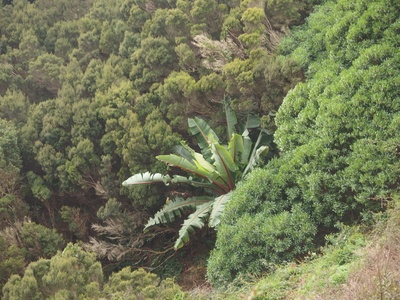
Abyssinian Banana
This is not a true banana but a close relative. While its fruit is inedible, its starchy stem and corm are a staple food, demonstrating its immense cultural importance.
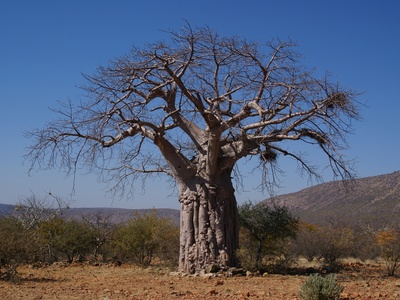
African Baobab
The legendary “upside-down tree,” with a massive, water-storing trunk and sparse branches. It is a keystone species, providing food, water, and shelter for countless organisms.
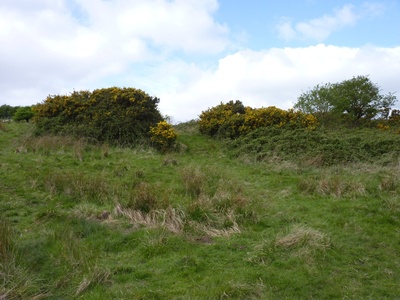
Broom Bush
A tangled, often leafless-looking shrub with powdery grey-green stems. It’s incredibly drought-resistant and an important browse plant for camels and goats in harsh environments.
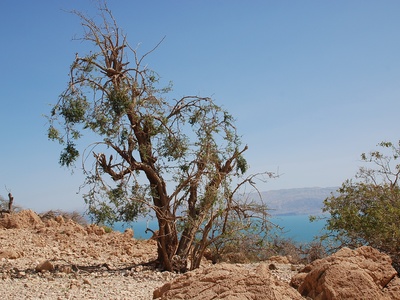
Christ’s Thorn Jujube
A thorny tree with small, shiny green leaves and edible, apple-like fruits. It is believed by some to be the tree from which Jesus’s crown of thorns was made.
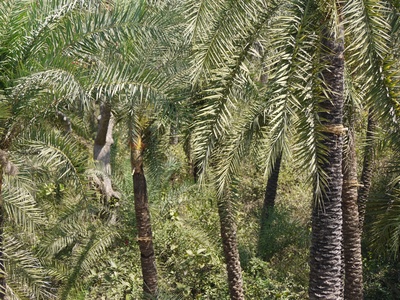
Wild Date Palm
A slender, clumping palm that leans out over water. Unlike the cultivated date palm, its fruits are smaller but still edible and are an important food source for wildlife.
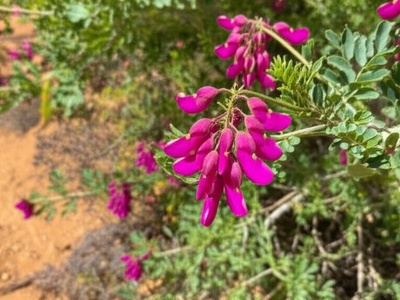
Ader shrub
A beautiful shrub with clover-like leaves and hanging, deep reddish-purple flowers. It’s a unique plant of the Afromontane flora, adding a splash of color to the dry landscape.

Yellowwood
A tall, slow-growing conifer, considered one of Africa’s “giant” trees. Its timber is highly prized, which has led to its decline, making it a major conservation priority.
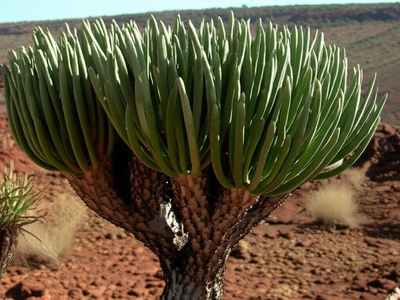
Somali Dragon Tree
A smaller, multi-stemmed relative of the Ombet Dragon Tree. It forms dense clumps and is well-adapted to arid conditions, with tough, narrow leaves that conserve water.

African Birch
A graceful tree with drooping branches, known as the “Chew-stick Tree” in other parts of Africa. Its wood is very hard and termite-resistant, making it excellent for construction.

Velvet-leaved Combretum
A common savanna tree known for its velvety leaves and distinctive four-winged fruits that spin like helicopters as they fall. It is a reliable indicator of savanna habitat.
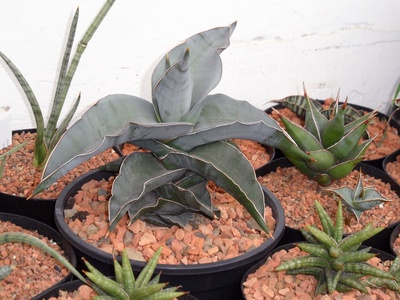
Blue Sansevieria
A succulent plant with stiff, sharp-pointed leaves that grow in a fan-like shape. Its leaf fibers are incredibly strong and have been traditionally used to make rope and string.
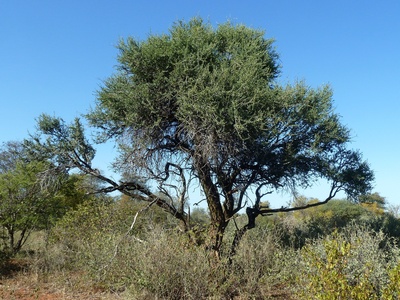
Shepherd’s Tree
An evergreen shrub or small tree that is a critical “famine food.” Its bitter seeds can be processed to become edible, providing a vital food source in times of drought.
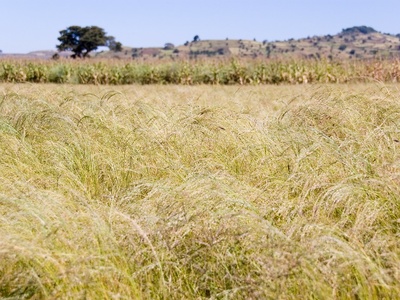
Teff Grass
While famous as a cultivated cereal, Teff originated here. Its tiny seeds are packed with nutrition, and its resilience makes it a crucial crop in the region’s challenging climate.
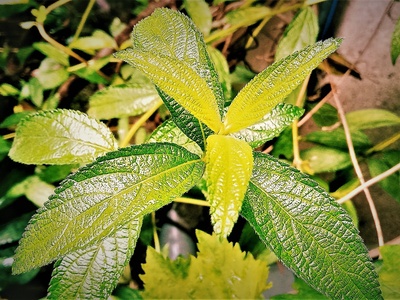
Koseret
An aromatic shrub whose leaves are used to make a popular herbal tea and to flavor butter. It is an important part of the region’s culinary and medicinal traditions.
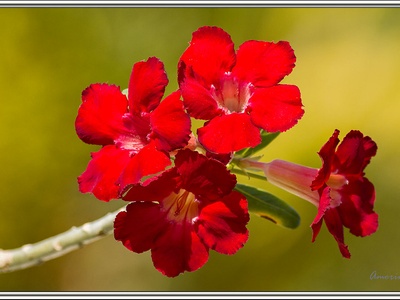
Desert Rose
A stunning succulent with a massively swollen trunk (caudex) for water storage and beautiful, trumpet-shaped pink or red flowers. Its sap is traditionally used as an arrow poison.
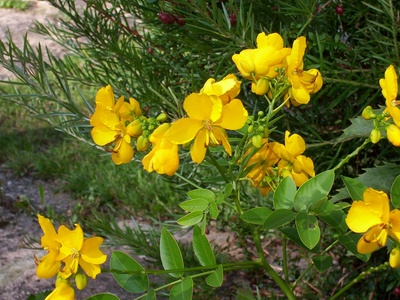
Winter Senna
A small, deciduous tree that produces a spectacular display of bright yellow flowers just before the rainy season begins. It has numerous uses in traditional medicine.
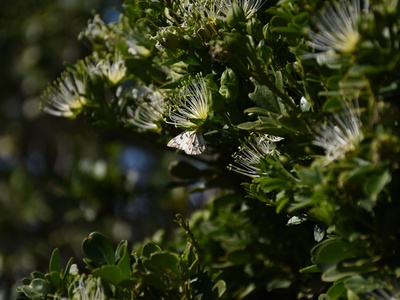
Bead-bean Tree
A small tree with leathery leaves and unique flowers with a mass of white stamens and no petals. Its roots are used in traditional medicine and as a water purifier.
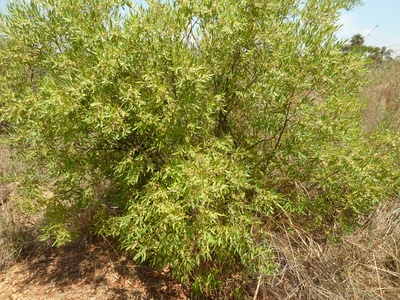
Guarri Bush
A dense, multi-stemmed shrub or small tree with dark, glossy leaves. It is very drought-resistant and its twigs are used as toothbrushes, similar to *Salvadora persica*.
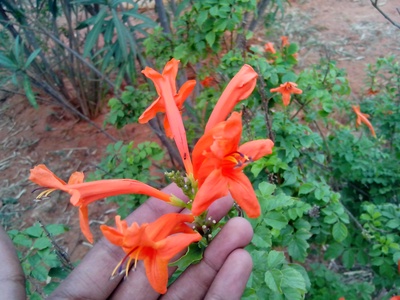
Cape Honeysuckle
A scrambling shrub that produces vibrant orange, trumpet-shaped flowers that attract nectar-loving birds. Its status in Eritrea is as a native part of the Afromontane flora.
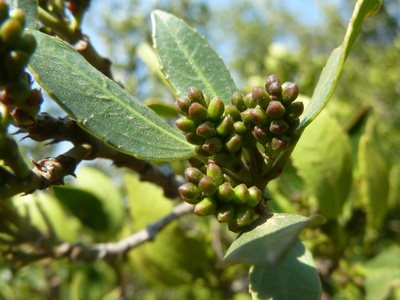
Gesho
A shrub or small tree whose glossy leaves and stems are used as hops in the brewing of traditional honey wine (Tej/Mies). It is a culturally significant plant.

Arrow-poison Tree
A dense evergreen shrub with fragrant white flowers. All parts of this plant are highly toxic, and its sap was historically used to create a powerful arrow poison for hunting.
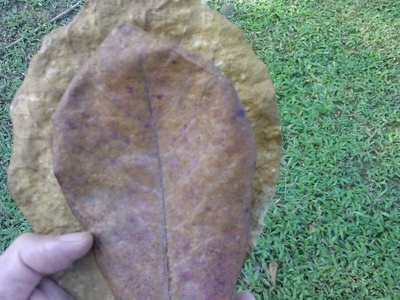
Brown’s Terminalia
A hardy, fire-resistant savanna tree with a layered, pagoda-like branching structure. Its wood is strong and used for construction, and it is an important source of fodder.
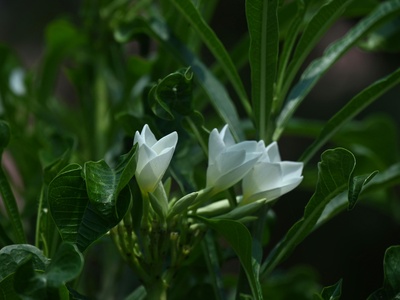
Transvaal Gardenia
A small, rigid tree with striking, star-like branching patterns. It produces large, fragrant white flowers that open at night and fade to yellow, attracting nocturnal pollinators.
